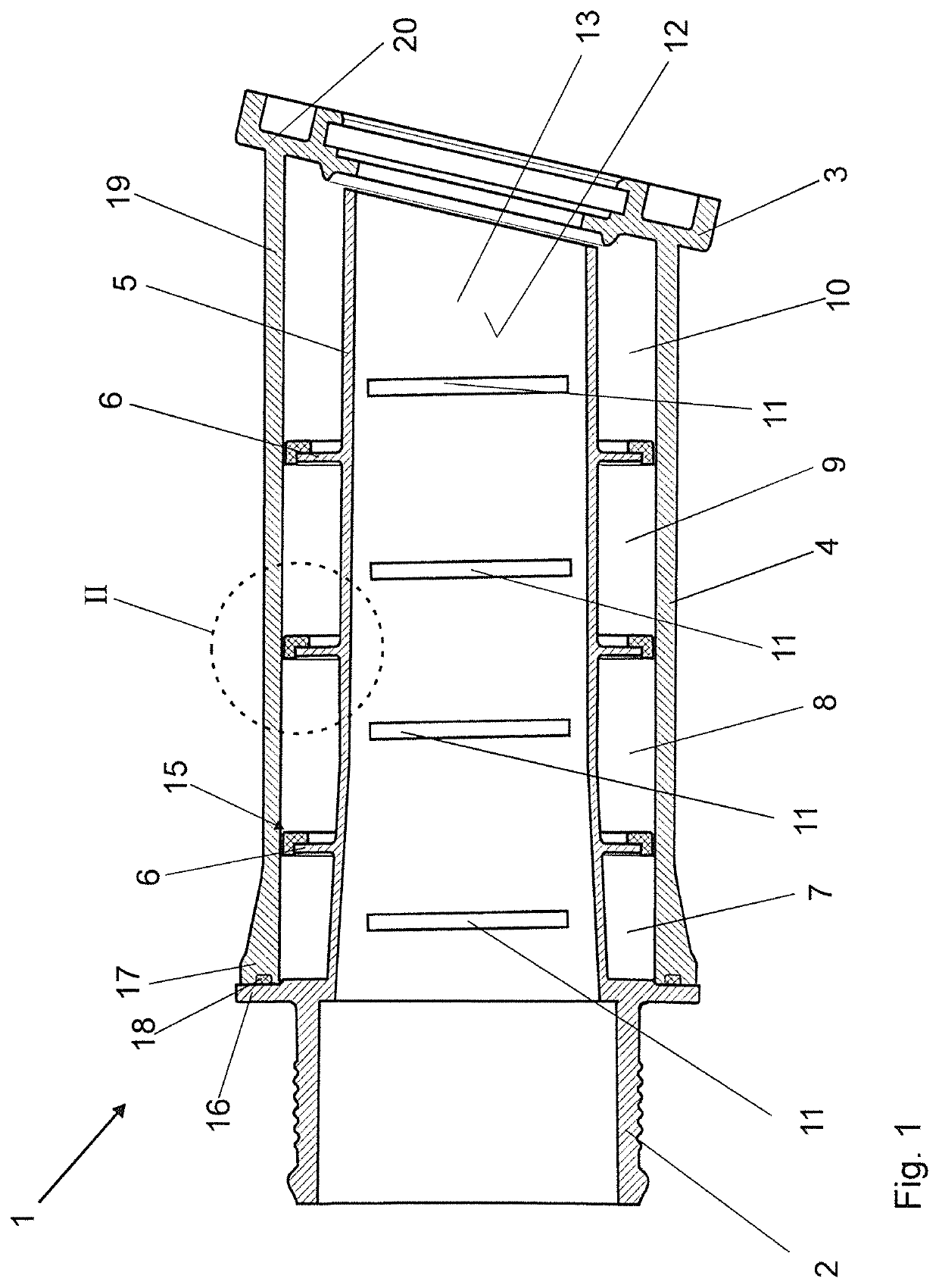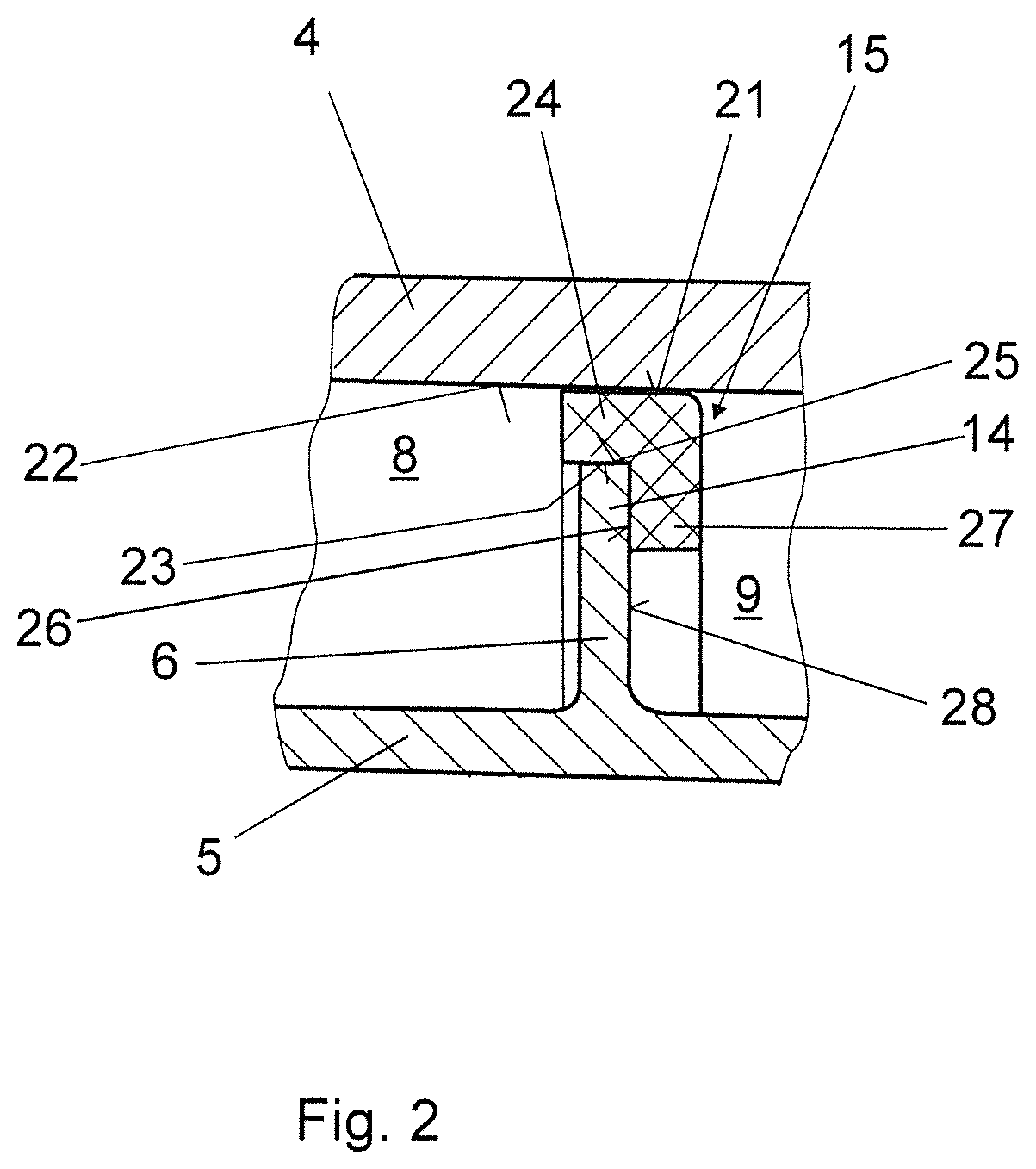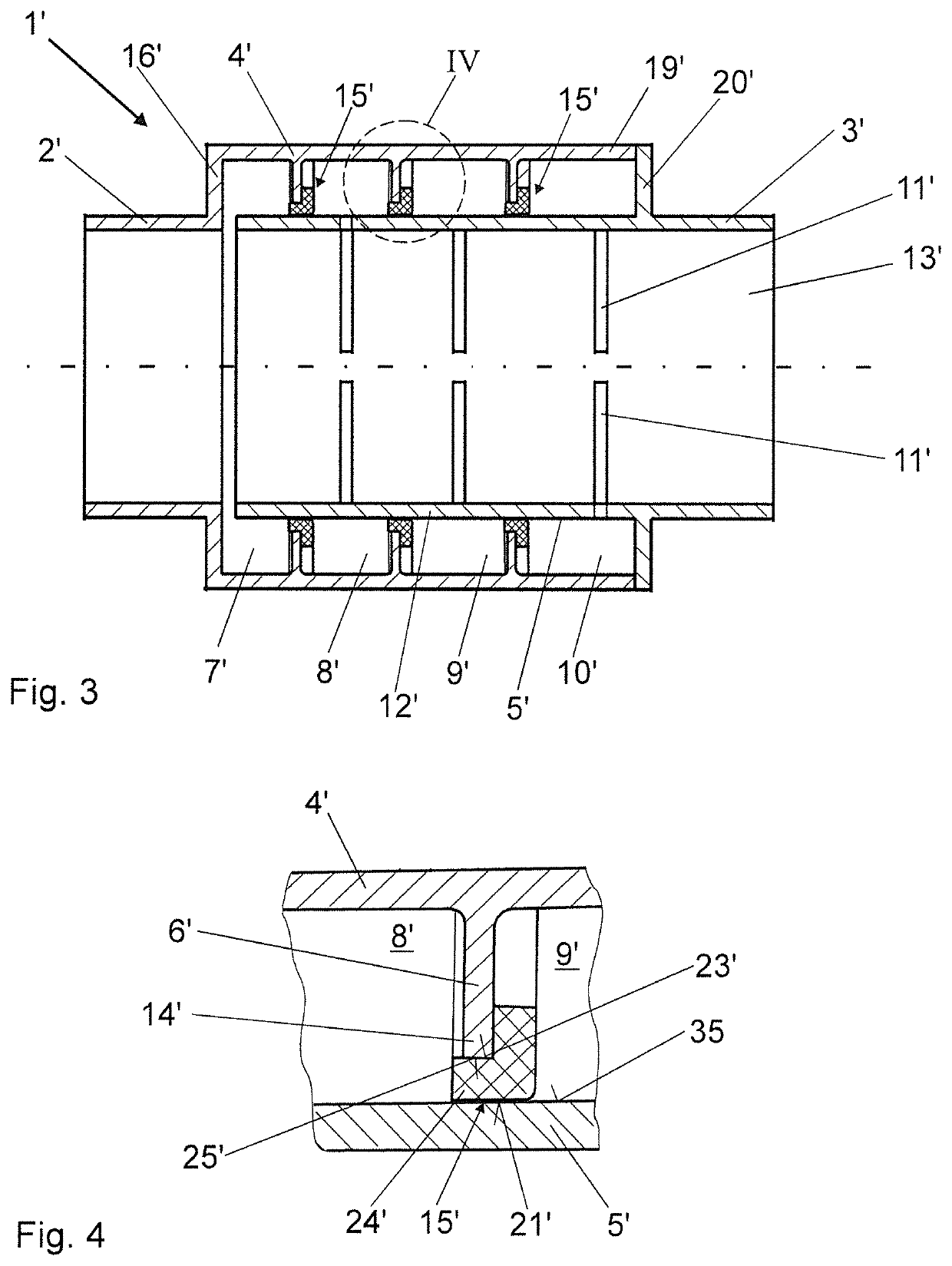Device for lowering flow noises
a flow noise and noise reduction technology, applied in the direction of fuel intake silencers, fuel intake silencers, combustion-air/fuel-air treatment, etc., can solve the problems of increased air mass throughput, undesirable frequency changes and/or damping characteristics, and imbalances that cannot be managed, so as to achieve reliable sealing effect, elastic properties, and reliable sealing effect
- Summary
- Abstract
- Description
- Claims
- Application Information
AI Technical Summary
Benefits of technology
Problems solved by technology
Method used
Image
Examples
Embodiment Construction
[0036]A device 1 for lowering flow noises (silencer) essentially comprises a first connection piece 2, a second connection piece 3, an outer sleeve 4 and an inner sleeve 5.
[0037]In the exemplary embodiments, the outer sleeve 4 and the inner sleeve 5 are arranged concentrically with respect to each other and between the first connection piece 2 and the second connection piece 3. In particular, the outer sleeve 4 can differ from the circular shape and can, for example, be constructed from two half shells (not shown). Between the inner sleeve 5 and the outer sleeve 4, in each case two adjacent volume chambers 7, 8, 9, 10 separated from each other by a peripherally extending radial collar 6 are arranged, said volume chambers being connected to the line space 13, which is enclosed by the inner sleeve 5, by means of openings 11 in the wall 12 of the inner sleeve 5. In the exemplary embodiments, the openings 11 are shown as slits. However, they can also be configured as holes, for example....
PUM
 Login to View More
Login to View More Abstract
Description
Claims
Application Information
 Login to View More
Login to View More - R&D
- Intellectual Property
- Life Sciences
- Materials
- Tech Scout
- Unparalleled Data Quality
- Higher Quality Content
- 60% Fewer Hallucinations
Browse by: Latest US Patents, China's latest patents, Technical Efficacy Thesaurus, Application Domain, Technology Topic, Popular Technical Reports.
© 2025 PatSnap. All rights reserved.Legal|Privacy policy|Modern Slavery Act Transparency Statement|Sitemap|About US| Contact US: help@patsnap.com



